FWF / Project P 28790: “New Phylogenetic Features in Oligotrichea (Ciliophora)” – Grant amount: € 276.182. Period: 01.03.2016–28.02.2019
Ciliates are heterotrophic unicellular organisms of microscopic size (< 1 mm). Currently, we know about 4,500 species, which probably represent only about 20% of the real diversity. The Oligotrichea are typical marine planktonic organisms. They comprise about 200 naked species and approximately 1,000 shell-forming tintinnid species. Oligotrichea are an essential component of the marine food web: they not only swim by means of their minute ciliary fans at the apical cell end, but also filter bacteria and other unicellular organisms. The Oligotrichea are preyed upon by small crustaceans, the food of many fish larvae.
In the past 20 years, morphologic and genetic analyses contributed greatly to the discovery of new species and the elucidation of the relationships among Oligotrichea. However, the gene trees are frequently not congruent with the morphology or lack statistical support. Besides several new gene sequences, phylogenetically significant cell features were thus analysed in the project, performing a novel integrative, synergistic approach; together they provide insights into the diversification of Oligotrichea and their morphologic/ultrastructural adaptations.
The description of a tintinnid species by means of light and scanning electron microscopy as well as molecular analyses revealed a new ciliary pattern, which explains the origin of a specialised ciliary row.
For investigating the barely known ultrastructure of Oligotrichea, the cells were thin-sectioned (70 nm) and studied by transmission electron microscopy. The somatic cilia of the tintinnids displayed unique anchoring structures, which form an extraordinary network in the cell cortex. The development of these structures probably correlates with the development of the shell, which covers the tintinnid cell, except for the ciliary fans. The findings regarding the oral ciliary fans provided again surprising insights into the evolution of the Oligotrichea, whose closest relatives are benthic ciliates that use their ciliary fans for filter feeding only. Interestingly, neither the newly gained swimming function of the fans in Oligotrichea nor the possession of a lorica in tintinnids had any effect on the ultrastructure, but the circular arrangement of the fans at the apical cell end in some closely related Oligotrichea. The analyses of the shell’s ultrastructure in almost 40 tintinnid species indicate its usability for inferring relationships.
Finally, the project did not only elucidate the relationships among the Oligotrichea, but also provided novel insights into general evolutionary principles in protists, particularly in morphologic/ultrastructural adaptations to freshwater by the investigation of a naked species in which an exceptional structure regulates the concentration of the cytoplasm.
Link zu FWF-Projekt P28790
Project associated publications:
- Agatha S. & Bartel H. (2022): A comparative ultrastructural study of tintinnid loricae (Alveolata, Ciliophora, Spirotricha) and a hypothesis on their evolution. J. Eukaryot. Microbiol. 69: e12877. https://doi.org/10.1111/jeu.12877
- Agatha , Gruber M.S., Bartel H. & Weissenbacher B. (2022): Somatic infraciliature in tintinnid ciliates (Alveolata, Ciliophora, Spirotricha): an ultrastructural comparison. J. Eukaryot. Microbiol. 69: e12885. https://doi.org/10.1111/jeu.12885
- Agatha S., Utz L., Zufall R., Warren A. (2021): Symposium on Ciliates in Memory of Denis Lynn. Eur. J. Protistol. 78: 125694. https://doi.org/10.1016/j.ejop.2020.125694
- Bardele C., Stockmann N. & Agatha S. (2018): Some ultrastructural features of the planktonic freshwater ciliate Limnostrombidium viride (Alveolata, Ciliophora, Oligotrichida) and improved diagnoses of oligotrich taxa. Acta Protozool. 57: 169–193. https://doi.org/10.4467/16890027AP.18.014.10090
- Gruber M., Strüder-Kypke M. & Agatha S. (2018): Redescription of Tintinnopsis everta Kofoid & Campbell, 1929 (Alveolata, Ciliophora, Tintinnina) based on taxonomic and genetic analyses – discovery of a new complex ciliary pattern. J. Eukaryot. Microbiol. 65: 484–504 + Supplement 1–10 + Tables 1, 2. https://doi.org/10.1111/jeu.12496
- Gruber M.S., Mühlthaler A. & Agatha S. (2018): Ultrastructural studies on a model tintinnid – Schmidingerella meunieri (Kofoid and Campbell, 1929) Agatha and Strüder-Kypke, 2012 (Ciliophora). I. Somatic kinetids with unique ultrastructure. Acta Protozool. 57: 195–214. https://doi.org/10.4467/16890027AP.18.015.10091
- Gruber M.S., Weissenbacher B., Agatha S. (2020): Ultrastructural studies on a model tintinnid – Schmidingerella meunieri (Kofoid & Campbell, 1929) Agatha & Strüder-Kypke, 2012 (Ciliophora). II. The oral apparatus. J. Eukaryot. Microbiol. 67: 463–479 + Supplement 1–18. https://doi.org/10.1111/jeu.12795
- Zhang Q., Agatha , Zhang W., Dong J., Yu Y., Jiao N.& Gong J. (2017): Three rDNA loci-based phylogenies of tintinnid ciliates (Ciliophora, Spirotrichea, Choreotrichida). J. Eukaryot. Microbiol. 64: 226-241 + Supplement 1–20. https://doi.org/10.1111/jeu.12354
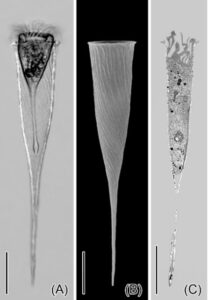
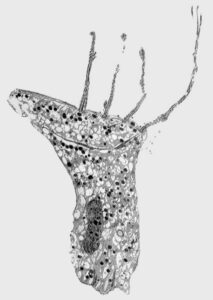
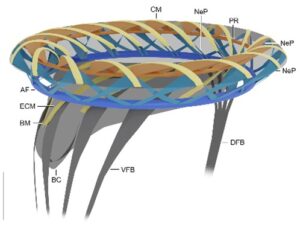
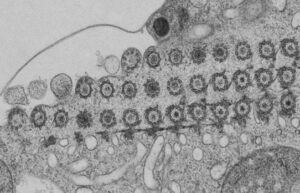
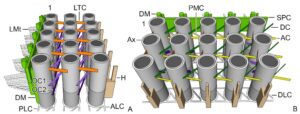
© Sabine Agatha All Rights Reserved




